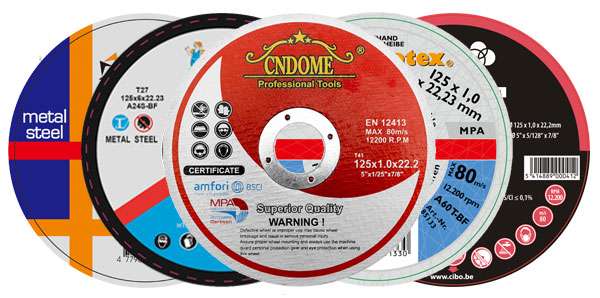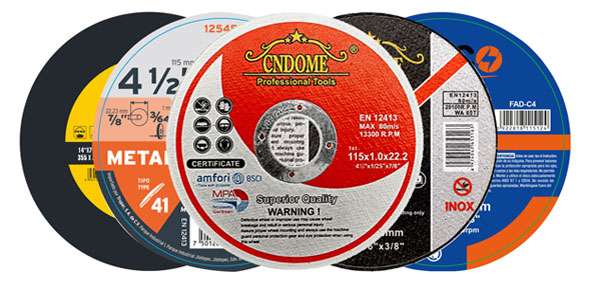When working on tile projects, having the right cutting disc is essential for ensuring clean and precise cuts. Tiles are often made of ceramic, porcelain, or stone, which can be challenging to cut due to their hardness and brittleness. Using the wrong type of cutting disc can lead to chipping, breakage, and unsatisfactory results. Here’s a guide to help you select the right cutting disc for tiles.
1. Types of Cutting Discs for Tiles
There are several types of cutting discs designed for cutting tiles, each suited for different materials and cutting methods.
Diamond Cutting Discs: These are the most commonly used discs for cutting tiles. They are coated with industrial diamonds, which makes them capable of cutting through hard materials like porcelain, ceramic, and stone. They come in two varieties:
- Continuous Rim Diamond Discs: Best for making smooth cuts, especially on delicate tiles like porcelain. The continuous rim ensures minimal chipping, which is crucial for maintaining the clean edges of the tile.
- Segmented Rim Diamond Discs: Ideal for faster and more aggressive cutting, segmented discs are suitable for thicker or tougher materials such as stone tiles. However, they may cause more chipping than continuous rim discs.
Turbo Diamond Discs: These discs are designed for both fast cutting and reduced chipping. Their turbo design offers a balance between continuous and segmented discs, making them versatile for a wide range of tile materials. They’re great for cutting harder tiles while keeping a relatively smooth finish.
2. Disc Size and Thickness
The size of the cutting disc matters based on the type of cuts you need to make. Common disc sizes for tile cutting range from 4 to 7 inches in diameter.
- Small Discs (4-5 inches): These are perfect for precision cuts, detailed work, and smaller tiles. They allow for better control and maneuverability.
- Larger Discs (6-7 inches): These discs are suitable for larger tiles and projects that require faster cuts.
The thickness of the disc also plays a role in the quality of the cut:
- Thin Discs: Thin discs (1.0-1.2mm) offer more precision and leave cleaner edges, but they may wear out faster when cutting harder tiles.
- Thicker Discs: Thicker discs (1.5-2mm) are more durable and better for heavy-duty jobs, but they might cause more chipping, especially with delicate materials.
3. Wet vs. Dry Cutting
Another important factor to consider when selecting a cutting disc is whether to use wet or dry cutting.
- Wet Cutting Discs: These are designed to work with water, which helps cool the disc and minimize dust. Wet cutting is preferred for delicate tiles, as it reduces the risk of cracking or overheating.
- Dry Cutting Discs: These are more convenient for smaller, quick jobs where water isn’t available or practical. However, they generate more dust and can cause overheating if used for extended periods. Always ensure you have proper dust protection when using dry cutting discs.
4. Selecting the Right Disc for Your Tile
- Ceramic Tiles: For ceramic tiles, a continuous rim diamond cutting disc is ideal. It will give you a clean, smooth cut without chipping the glaze on the tile.
- Porcelain Tiles: Porcelain is harder than ceramic, so a turbo or segmented rim diamond disc is better suited for the task. Wet cutting is recommended for porcelain to prevent overheating.
- Stone Tiles: If you’re cutting natural stone tiles, such as marble or granite, a segmented diamond disc is your best option, as it can handle the density and thickness of the material.
5. Safety Tips
- Always wear protective gear, including safety goggles and a dust mask, as tile cutting can produce fine dust particles that are harmful if inhaled.
- Secure your tile properly before cutting to avoid movement that can lead to inaccurate cuts or damage to the tile.
- Make sure your cutting disc is in good condition—avoid using damaged or worn discs, as they can shatter during use.
Conclusion
Choosing the right cutting disc for tiles is essential for achieving precise, clean cuts without damaging your materials. Whether you’re working with ceramic, porcelain, or stone, understanding the characteristics of each type of disc will help ensure a successful tile cutting project. Always match the disc type to the tile material, consider using water to cool the disc, and prioritize safety throughout the process.



